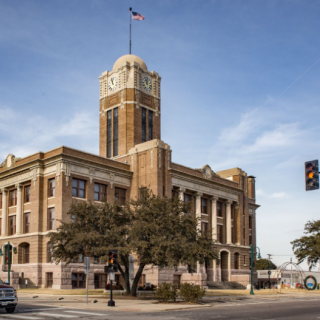Ohio State University will raise the minimum wage of about 3,800 non-union employees to $15 per hour next year. In making the announcement on August 30, OSU President Michael Drake used the language of free market ideology.
“This effort is in keeping with a competitive marketplace and…the university’s commitment to invest in individuals and families throughout our Buckeye community,” Drake said in a press release. He said nothing about a living wage or economic justice. He used phrases like “competitive marketplace” and “investing” in people — crediting the pay raise to a strong labor market.
In other words, the free market is working as it should. “A rising tide lifts all boats,” John F. Kennedy said. If an economy is strong and growing, everyone will benefit from it. Right?
Not everyone at OSU will benefit from the $15 minimum. It won’t apply to student jobs, which currently bring an average of $9 an hour according to Glassdoor. The university “plans to establish new minimum wage tiers as appropriate” for student workers. Meanwhile in-state tuition is increasing by 3.3% this year for incoming freshmen. Student housing fees are going up 2.2%.
1,000 OSU employees who already earn $15 will have their hourly pay go up to $16. This part of OSU’s pay hike parallels the $15 initiative that Amazon rolled out a year ago. Amazon’s $15-an-hour workers also got a dollar raise. It’s as though President Drake has taken a page from Jeff Bezos’ playbook.
Other large corporations and institutions are raising their minimum wage to $15 this year, including Nationwide Children’s Hospital and OhioHealth. Cincinnati-based Fifth Third Bancorp is raising its minimum wage to $18 in October.
To what do we owe this largesse? Should we be thankful to the free market and the 1 percent for allowing some prosperity to trickle down to the rest of us?
The impetus to raise the minimum wage is not coming from the beneficence of corporate executives or university presidents. They’re responding to pressure from below. “Amazon didn't pick $15 for no reason whatsoever but because of its symbolic importance," said Ben Zipperer at the Economic Policy Institute. "Political pressure can actually change wages in our economy.”
If you want to thank someone, thank the Occupy protesters. In the wake of the 2008 recession, they raised class consciousness to the point that millions of Americans will no longer tolerate the worst excesses of capitalism.
Thank the Fight for $15 movement, which began organizing service workers in 2012 to fight for a living wage.
Thank Kshama Sawant, Socialist Alternative, and grassroots supporters in Seattle. They won a $15 minimum wage in 2014, opening the door for other cities to follow suit.
Thank Bernie Sanders for including $15 in his 2016 presidential bid, bringing the demand to the national scale. Once considered an unrealistic pipe dream, $15 is becoming a standard that corporate America is under increasing pressure to meet.
Meanwhile, class consciousness has continued to move ahead. As the cost of housing continues to skyrocket, the working class is realizing that a $15 wage isn’t enough. In many cities, $15 an hour isn’t a living wage.
MIT’s Living Wage Calculator crunches the numbers for a living wage in counties across the United States. In the cost of living, it includes food, child care, housing, medical, and transportation. In Franklin County, the living wage for a single adult is $11.24 an hour. For a single adult with one child, the living wage is $23.50. With two children, it’s $27.80.
Columbus City Council and Mayor Ginther — all corporate-backed Democrats — continue to stall on bringing $15 to Columbus. The only concession they’ve made is requiring a $15 minimum wage for companies to qualify for job-creation incentives. They continue to cite the Republicans’ misreading of the Ohio Constitution as the reason why they won’t push for city-wide $15.



